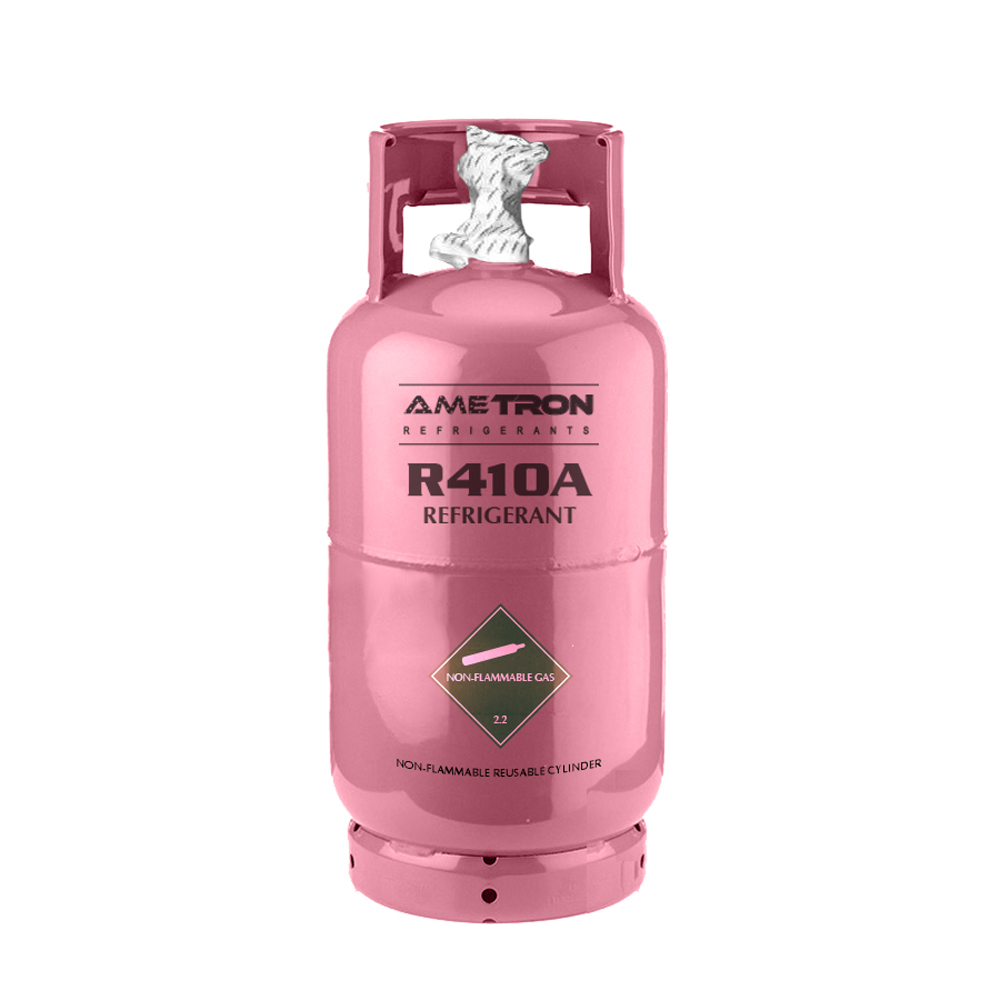If you own an air conditioner or heat pump, you’ve probably heard of 410A refrigerant. It’s been one of the most commonly used cooling agents in modern HVAC systems for nearly two decades. Known for its energy efficiency and ozone-friendly nature, R-410A became the industry standard after the phase-out of older refrigerants like R-22.
But as technology evolves, so do environmental standards — and the story of R-410A is still unfolding. Let’s explore what 410A refrigerant is, how it works, its pros and cons, and what’s next in the world of cooling systems.
What Is 410A Refrigerant?
410A refrigerant, often referred to as R-410A, is a hydrofluorocarbon (HFC) blend composed of two chemicals — R-32 and R-125. It was developed as a replacement for R-22 (Freon), which was banned due to its ozone-depleting properties.
Unlike R-22, 410A doesn’t contain chlorine, making it safe for the ozone layer. It’s used in many residential and commercial air conditioners, heat pumps, and other refrigeration systems.
Key Characteristics of 410A Refrigerant:
-
Composition: 50% R-32 and 50% R-125
-
Type: HFC (Hydrofluorocarbon)
-
Ozone Depletion Potential (ODP): 0
-
Global Warming Potential (GWP): 2088
-
Operating Pressure: Around 1.6 times higher than R-22
-
Common Use: Residential and commercial air conditioners, heat pumps
Why 410A Became the HVAC Standard
After the environmental phase-out of R-22 under the Montreal Protocol, HVAC manufacturers needed a refrigerant that could provide high efficiency without damaging the ozone layer. That’s when R-410A took over.
Advantages of Using 410A Refrigerant
-
Environmentally Safer
R-410A has zero ozone depletion potential, making it much safer for the environment than R-22. -
Higher Energy Efficiency
It allows air conditioners to run more efficiently and use less power for the same cooling output. -
Better Cooling Performance
Systems using R-410A operate under higher pressure, resulting in faster and more consistent cooling. -
Longer System Lifespan
R-410A uses synthetic oil, which reduces wear and tear on compressors compared to the mineral oils used in older systems. -
Cleaner, Quieter Operation
With optimized heat transfer and better lubrication, R-410A systems tend to operate more quietly and with fewer maintenance issues.
How 410A Refrigerant Works
Refrigerants like 410A work by cycling through a process of compression, condensation, expansion, and evaporation — effectively transferring heat from inside your home to the outdoors.
Here’s how it works step by step:
-
Compression: The refrigerant gas is compressed by the compressor, increasing its temperature and pressure.
-
Condensation: The hot gas releases heat outdoors and condenses into a high-pressure liquid.
-
Expansion: The liquid passes through an expansion valve, lowering its pressure and temperature.
-
Evaporation: The cold refrigerant absorbs heat from the indoor air, cooling your home.
Because of its chemical composition, 410A performs this cycle more efficiently than its predecessors.
The Downside: Why 410A Is Being Phased Out
While R-410A is ozone-friendly, it still contributes to global warming due to its high GWP (Global Warming Potential). As environmental standards evolve, many countries — including the U.S. — have started implementing HFC phase-down programs under the Kigali Amendment to the Montreal Protocol.
Upcoming Replacement Refrigerants:
-
R-32: Has a GWP of 675 (about one-third of R-410A) and offers better efficiency.
-
R-454B: An even lower GWP alternative (466) and non-toxic.
-
R-290 (Propane): A natural refrigerant with a very low GWP, though flammable.
If you have an R-410A system, don’t worry — it’s not illegal. It just means future systems will shift toward eco-friendlier options.
Safety Tips When Handling 410A Refrigerant
Although R-410A is non-toxic and non-flammable, it operates at high pressure and requires professional handling.
Safety Guidelines:
-
Only certified HVAC technicians should service or recharge R-410A systems.
-
Always use equipment rated for high-pressure refrigerants.
-
Avoid direct skin contact with refrigerant; it can cause frostbite.
-
Never mix 410A with other refrigerants — it can cause system failure.
Environmental Impact of 410A
Even though 410A refrigerant is better for the ozone layer, its high GWP (over 2000) means it still contributes to global warming if released into the atmosphere. Proper recovery, recycling, and disposal are crucial to minimize its environmental impact.
Tips for Eco-Friendly Use:
-
Schedule regular maintenance to prevent leaks.
-
Recycle or reclaim refrigerant when replacing units.
-
Upgrade to newer systems with R-32 or R-454B for reduced emissions.
FAQs About 410A Refrigerant
1. Is 410A refrigerant being banned?
Yes, R-410A is being phased out gradually due to its high global warming potential, but it’s still legal for existing systems.
2. Can you mix R-410A with R-22?
No. These refrigerants are chemically and physically different. Mixing them can damage the compressor and system components.
3. What replaces R-410A refrigerant?
The most common replacements are R-32 and R-454B, both of which are more eco-friendly.
4. Is R-410A toxic or flammable?
No, R-410A is non-toxic and non-flammable, but it must be handled with care due to its high pressure.
5. Can homeowners recharge R-410A systems themselves?
No. Handling refrigerants requires EPA Section 608 certification. Always hire a qualified technician.
Conclusion: The Evolution of Cooling Efficiency
R-410A refrigerant has played a major role in making air conditioning systems more efficient and environmentally responsible. Although its phase-out marks the end of an era, it also opens the door to greener, more sustainable refrigerants like R-32 and R-454B.



